Bright Choices: LED vs Halogen Lighting for Your Home (A Meteor Electrical Guide)
Bright Choices: LED vs Halogen Lighting for Your Home (A Meteor Electrical Guide)
In an energy-aware home, replacing halogen with LEDs is one of the quickest upgrades to cut bills, reduce heat and boost comfort without changing your fittings. Residential LEDs use far less energy than halogen and last significantly longer, so you save every time you switch on. With halogen sales restricted in many markets since 2021, now is a great time to make the move and start benefiting from modern lighting. Whether you're researching LED vs halogen energy savings, comparing dimmable LED vs halogen spotlights, or evaluating LED vs halogen heat output, this guide covers everything you need to know. We’ll also walk you through how to replace halogen with LED GU10 and share essential home LED retrofit tips to help you upgrade with confidence.
Halogen vs LED Spotlights: A Detailed Comparison
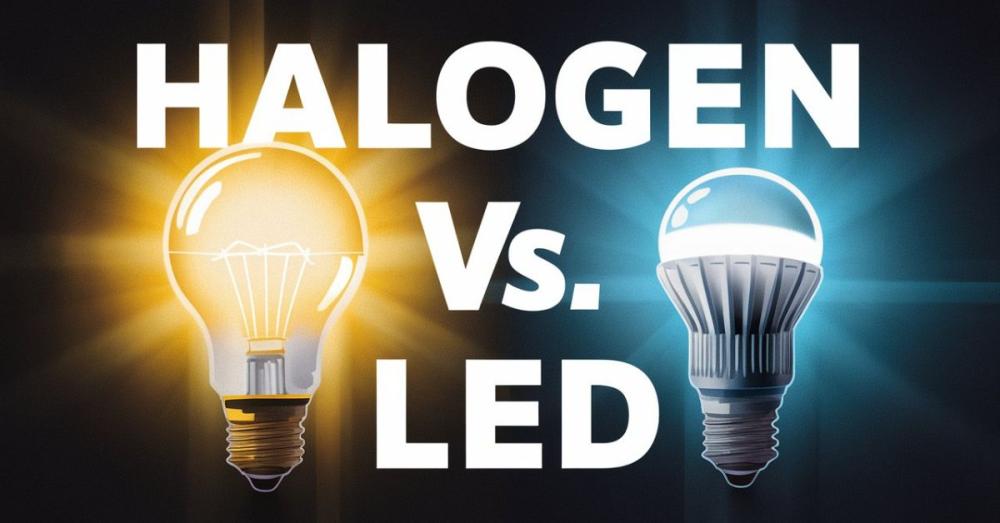
Halogen and LED are popular in spotlights and downlights, but they differ in how they create light, manage heat and consume power. LEDs produce efficient, directional light with minimal heat, while halogens rely on a hot filament in halogen gas, which is bright and instant but less efficient and much hotter.
What is a Halogen Spotlight Bulb

Halogen spotlights are an advanced form of incandescent lamp that use a tungsten filament inside halogen gas to deliver a warm, bright beam at full output immediately. They are familiar and low cost upfront, but they waste much of their energy as heat and have short service lives compared with LED.
What is an LED Spotlight Bulb
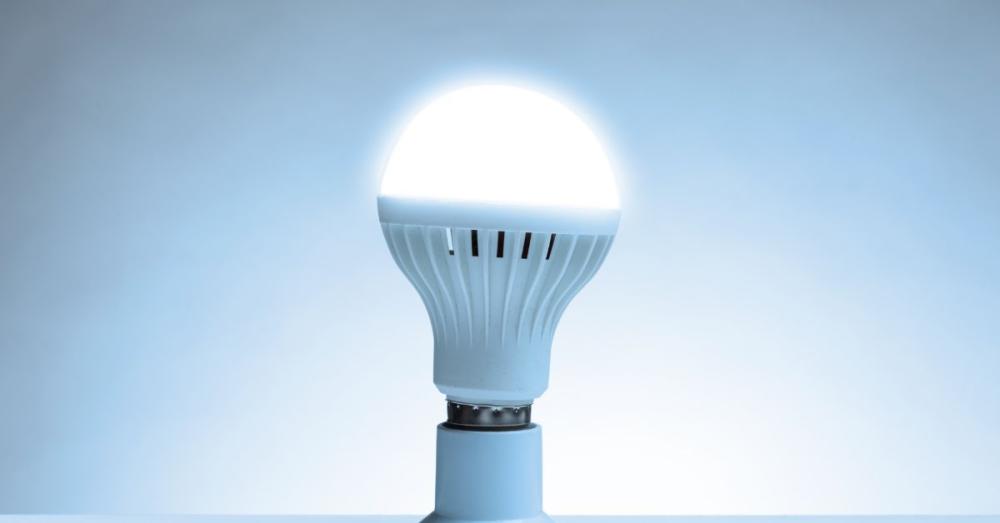
LED spotlights generate light by driving current through semiconductors for efficient, controlled output and very low heat. Quality household LEDs can reduce energy use substantially and maintain performance for many thousands of hours, which cuts replacements and maintenance.(Energy. Gov).
Key Differences: LED vs Halogen
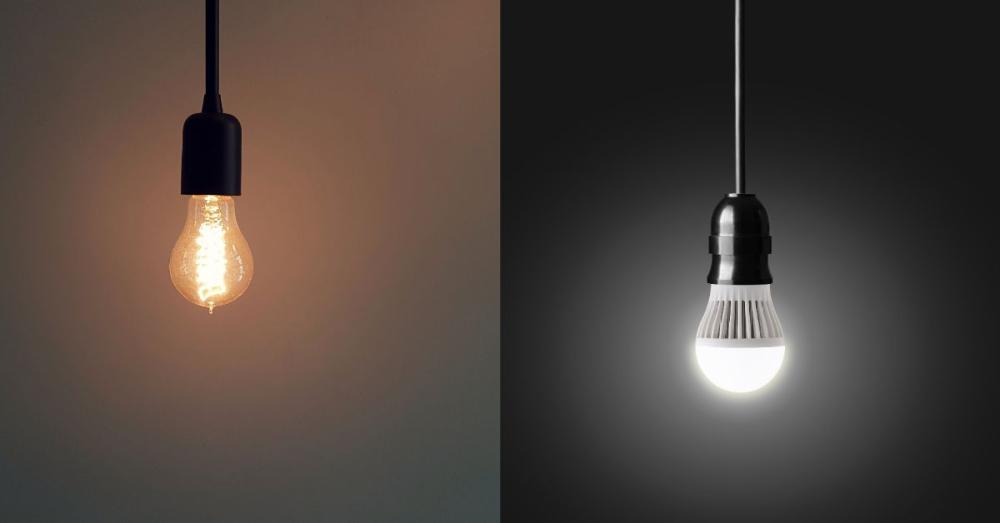
Power consumption
When it comes to LED vs halogen energy savings, LEDs deliver the same brightness with a fraction of the watts, so you see lower electricity bills and less heat around fixtures and ceilings. This is why LEDs are a top upgrade for energy efficiency in living rooms, kitchens and hallways.
Brightness control: Dimmable LED vs Halogen Spotlights
Many LED lamps are dimmable and work smoothly with compatible trailing edge dimmers, so you can set the right ambience for living, dining and bedroom spaces. Directional output also improves efficiency in recessed downlights and task lighting where focused beams reduce wasted light.
Life expectancy
Well made LED lamps are commonly rated around 15,000 to 25,000 hours, which is far beyond typical halogen lifetimes. Fewer changeouts mean less time on ladders and lower ongoing costs, especially in high ceilings, stairwells and soffits, some of the advantages of long lifespan LED bulbs.
Energy and heat impact
When it comes to LED vs halogen heat output, LEDs emit very little heat compared with halogen, which releases most of its input as heat rather than light. Lower heat improves comfort near seating, reduces risk around insulation and fabrics and can ease cooling load in summer.
Source - History of Simple Things
Additional Benefits of LED Lighting
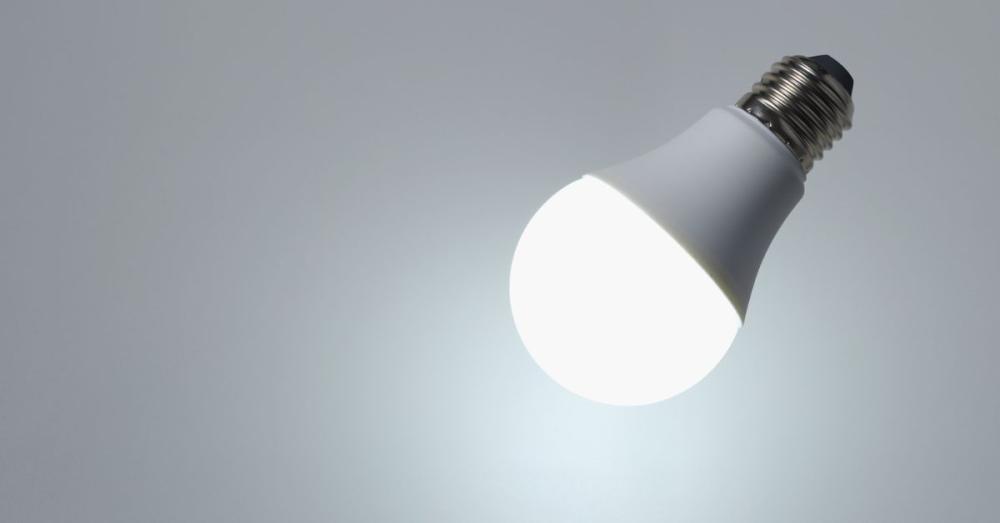
Instant brightness
LEDs reach full light instantly with no warm up and start reliably in cold garages, lofts and outdoor fixtures. This instant on behaviour improves safety in entrances and corridors.
Durability
LEDs are solid state devices without fragile filaments, so they handle shock and vibration better than older lamps. That resilience is helpful for busy households, workshops and outdoor fittings.
Versatility
LEDs come in a wide range of colour temperatures and beam angles for accent, task and ambient lighting. From warm white for cozy lounges to daylight for worktops and studies, you can tune rooms for comfort and clarity..
Can You Still Buy Halogen Light Bulbs
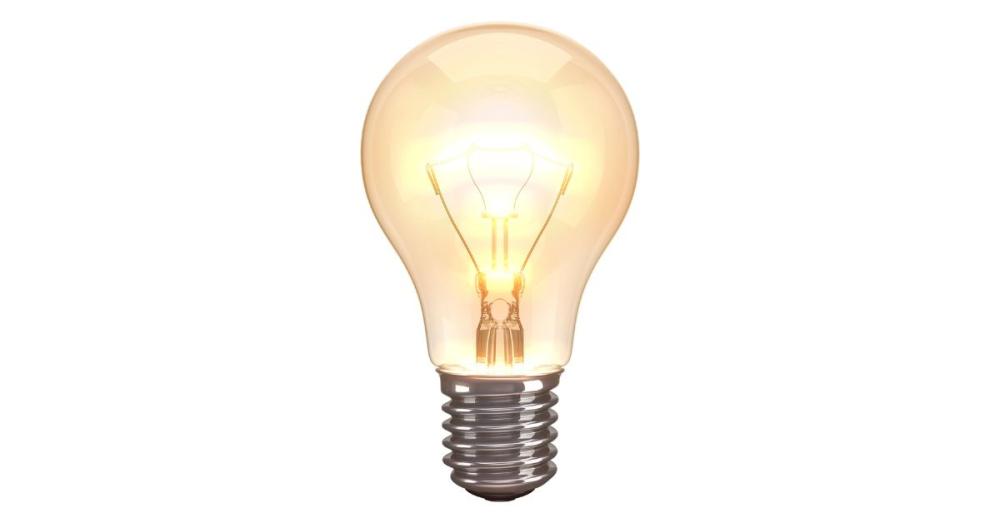
In the UK, most halogen bulb sales ended in September 2021 due to tighter efficiency standards. If you still have halogens installed, you can use them until end of life, but new purchases typically favor LED for superior efficiency and longevity. For policy context, see the UK Government announcement and reputable explainers.
DIY Guide: Replacing Halogen with LED
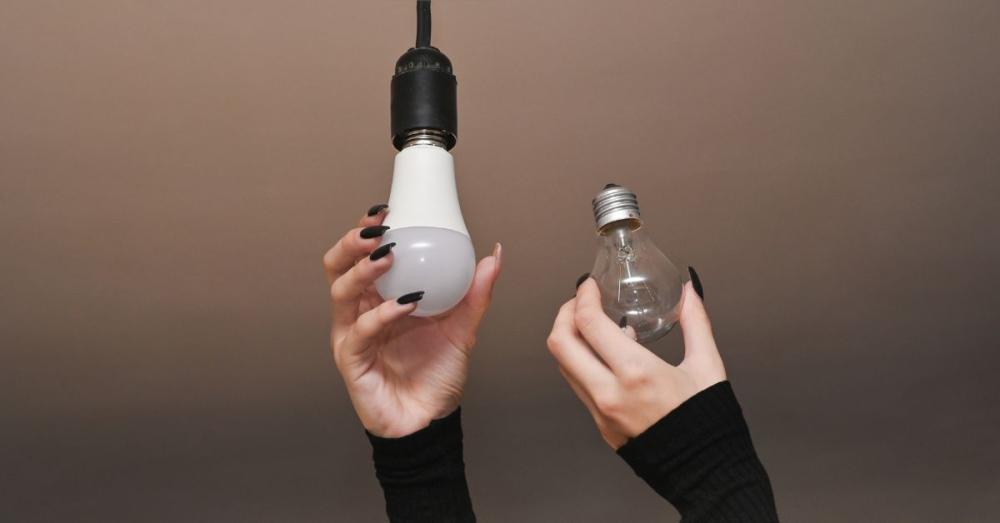
Swapping halogen for LED is often a simple DIY job. Match the base, choose lumens, confirm dimming, pick the right colour temperature and you are set.
- Identify the bulb and cap. Common spotlight fittings include GU10 mains voltage and MR16 GU5.3 low voltage. Match the same base when selecting your LED.
- Choose brightness by lumens. A typical 50 W halogen GU10 is replaced by an LED around 400 to 500 lumens for similar light using far fewer watts.
- Confirm dimming. If your circuit is dimmable, select lamps labeled dimmable LED and use a compatible trailing edge dimmer.
- Pick colour temperature. Warm white 2700 to 3000 K for living areas, 3500 to 4000 K for kitchens and baths, and 5000 to 6500 K for task or utility spaces.
- Turn off power and replace. Isolate the circuit, remove the halogen and install the LED per instructions, often a simple twist in for GU10.
Room-by-Room LED Lighting Guide
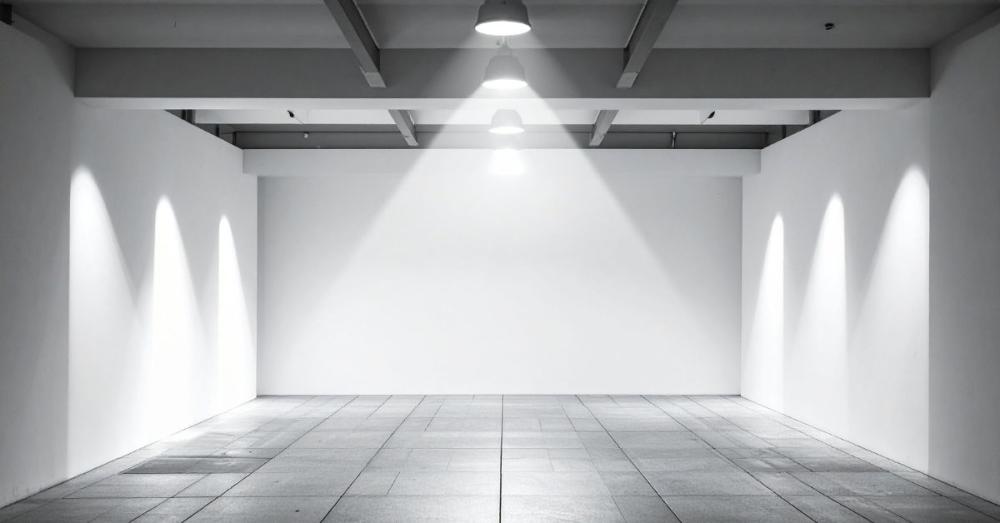
Choosing the right LED for each room improves comfort, clarity and energy use. Here is how to match bulbs to spaces.
- Living rooms. Use 2700 to 3000 K warm white for cozy evenings. Pair with dimmable LEDs for movie nights or gatherings.
- Kitchens. Pick 3500 to 4000 K neutral white for better visibility on counters and while cooking.
- Bathrooms. 3500 to 4000 K improves grooming and makeup accuracy. Use IP rated LEDs in wet zones.
- Home offices. 4000 to 5000 K supports focus and reduces eye strain during long work sessions.
- Hallways and stairs. 3000 to 4000 K with instant on LEDs for safety and visibility.
Cost and Payback of LED Upgrades
LEDs cut wattage dramatically while extending lifespan, so savings come from both energy and fewer replacements. In typical homes where bulbs run a few hours per day, simple payback often arrives within months, then the savings continue for years. If upgrading many fittings, consider multi packs or trade ranges for better value.
Safety and Sustainability
Halogens run hot, which can be uncomfortable near seating and risky around insulation in recessed cans. LEDs run much cooler, improving safety and helping fixtures last longer. At scale, LED adoption reduces electricity demand and emissions, supporting household budgets and wider sustainability goals.
Troubleshooting LED Upgrades
- Flicker on dimmers. Replace with trailing edge LED compatible dimmers and ensure the minimum load is met.
- Transformers on MR16. Low voltage systems may need LED compatible electronic drivers or a switch to GU10 mains to simplify.
- Colour mismatch. Buy from the same range or bin and note correlated colour temperature and CRI for consistent appearance.
- Beam spread. Match halogen beam angles, often 36 degrees for general spotlighting or 24 degrees for accenting.
Helpful High Authority Resources
- U.S. Department of Energy Energy Saver: LED lighting overview and home guidance
- Energy Saver: Lighting choices that save you money
- UK Government: Halogen bulb phase out announcement
- DOE solid state lighting insights on adoption and savings
Brighten Your Home with Meteor Electricals LED Lighting Range

Upgrading from halogen to LED is a smart investment that delivers lasting benefits. With LED vs halogen energy savings of up to 85% (Energy Saving Lighting), you’ll see lower bills from day one. Enjoy flicker-free dimming with dimmable LED vs halogen spotlights and safer, cooler operation thanks to reduced LED vs halogen heat output. Whether you're doing a full retrofit or just replacing a few bulbs, our guide on how to replace halogen with LED GU10 makes it easy. And with our home LED retrofit tips, you can plan a lighting upgrade that enhances comfort, clarity and style in every room.
Explore Meteor Electrical’s complete LED range to find the perfect fit for your home and make the switch today.
FAQs
1. Do LEDs really save money over halogen?
Yes, LEDs use far less energy than halogen and last much longer, which lowers electricity and replacement costs over time.
2. Are LED bulbs dimmable like halogen?
Many LEDs are dimmable. Choose dimmable models and pair them with compatible trailing edge dimmers to avoid flicker.
3. What LED replaces a 50 W halogen GU10?
Choose an LED around 400 to 500 lumens with a similar beam angle to match the light output while using much lower wattage.
4. Which colour temperature is best at home?
Pick 2700 to 3000 K for living spaces, 3500 to 4000 K for kitchens and baths, and 5000 K or higher for task zones.
5. How long do LED bulbs last?
Typical consumer LEDs are rated around 15,000 to 25,000 hours, which is many times longer than halogen.
6. Do LEDs run cooler than halogen?
Yes, LEDs emit very little heat, which improves comfort, reduces fixture stress and lowers safety risks near insulation.
7. Can I still buy halogen bulbs?
In the UK most halogen bulbs were removed from sale in 2021. Existing bulbs can be used until they fail, but LEDs are now the standard choice.
8. Are LEDs suitable for outdoor use?
Yes, select outdoor rated models with appropriate IP ratings and colour temperature for entrances, paths and security.
9. Will LEDs work with my existing fittings?
In most cases, yes. Match the cap type such as GU10 or E27 and ensure voltage and driver compatibility for low voltage systems.
10. What are the environmental benefits of LEDs?
LED adoption reduces energy demand and emissions, helping households save money while supporting sustainability goals.

